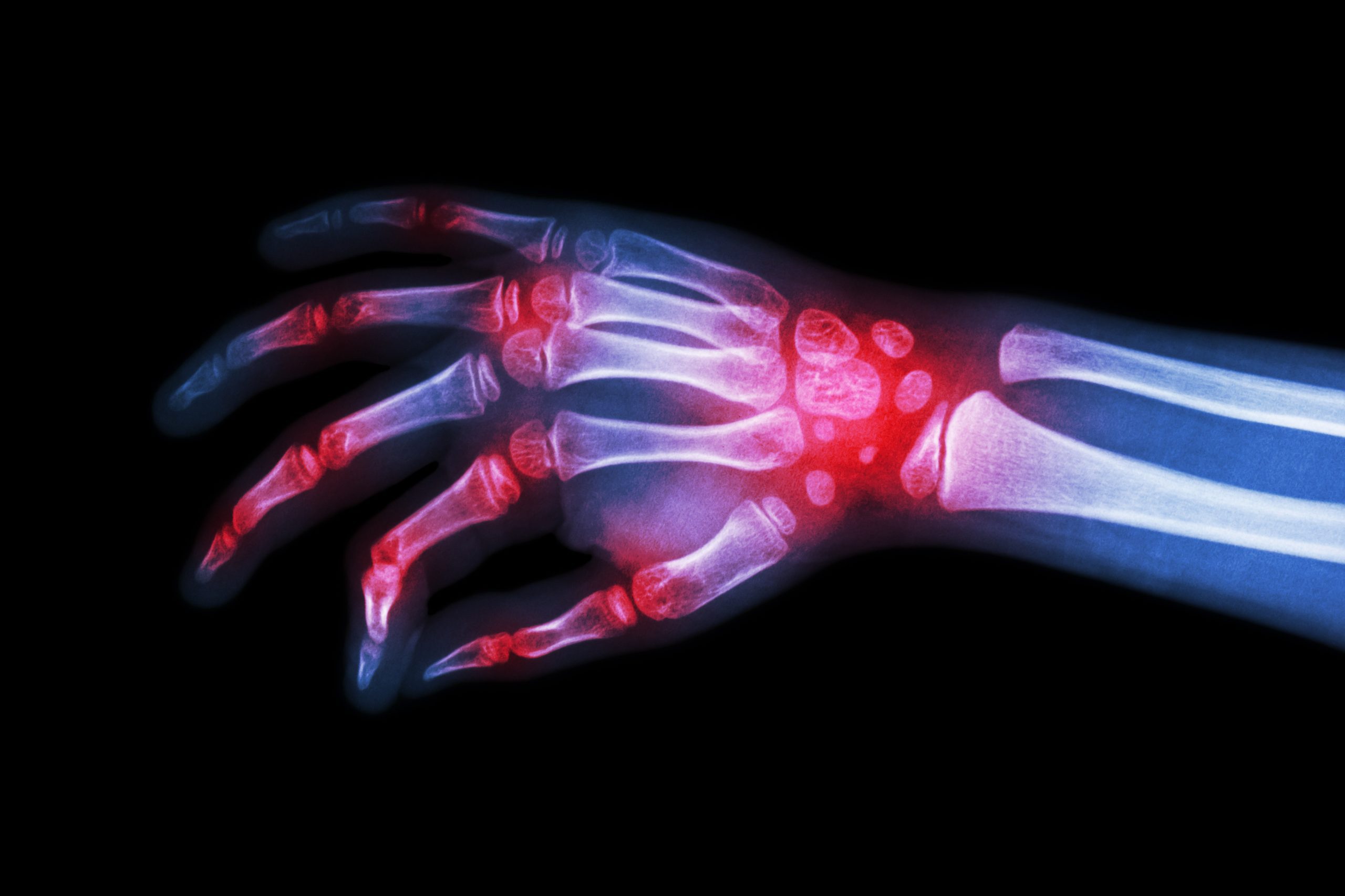
Treatments for hand and wrist osteoarthritis
Arthritis is a condition that is likely to affect many of us in our lifetime, especially as we get older. A Versus Arthritis study from 2023 reports that there are roughly 10 million people in the UK living with osteoarthritis, with an estimated 350,000 being diagnosed with the condition each year. Given that osteoarthritis is more problematic when it affects joints that see regular use, let’s examine the treatment options available for osteoarthritis of the hand and wrist.
Defining wrist osteoarthritis
Osteoarthritis in the wrist causes the soft tissue lining the joints to break down. When this happens, the cartilage can no longer serve its protective function and the two ends of bone begin to rub together (distal radius/ulna and scaphoid/lunate/triquetral). The result can be pain and stiffness at the affected area, along with potential loss of movement and bone deformities. Arthritis in any form is also one of the main contributing factors in upper and lower extremity fractures, such as a distal radius fracture. Read ‘Common causes of upper extremity fractures’ for more information.
What’s the difference between arthritis and osteoarthritis?
Osteoarthritis is a degenerative form of arthritis which is caused by wear and tear from excessive use of the affected joints. It is also the most common type of arthritis. While there are many more types of arthritis that can affect the bones in the hand and wrist, the other common types include Rheumatoid arthritis and Psoriatic arthritis.
What areas does hand osteoarthritis commonly affect?
Although osteoarthritis is common in the hand due to the number of different bones, it rarely affects all parts of the hand and wrist equally. Instead, it most often affects the following joints in the hand:
- The distal interphalangeal joint (DIP joint).
- The proximal interphalangeal joint (PIP joint).
- The trapeziometacarpal joint (TMC joint).
- The carpometacarpal joint (CMC joint).
- The tri-scaphoid joint (STT joint).
Treatment options for osteoarthritis of the hand and wrist
At the time of writing, it is still unclear what the root cause of osteoarthritis is. However, medical professionals like LEDA are aware of the factors that can make an individual more susceptible to hand and wrist osteoarthritis. This includes a patient’s age, weight, injuries, hobbies, sex, genetics, and any underlying joint health problems. Fortunately, there are many treatment options both orthopaedic and non-orthopaedic that surgeons may employ in cases of osteoarthritis.
MAIA CMCJ Replacement
One of the key areas in the hand that is susceptible to osteoarthritis are the carpometacarpal and trapeziometacarpal joint at the base of the thumb where it meets the wrist. This orthopaedic device from Group Lépine is a surgical treatment designed to restore motion and provide stability to the thumb. It consisted of a cup, neck, and stem which, when implanted, connect the two ends of bone at the joint. This is an osteotomy procedure as small pieces of bone at the joint must be removed to allow for the implantation of the MAIA device, which serves as a thumb joint replacement.
INCA STT Prosthesis
In cases of scaphotrapeziotrapezoid osteoarthritis, surgeons can use the INCA STT prosthesis for lasting treatment. The implant has been designed anatomically to make sure it fits perfectly with the anatomy of the patient’s joint surfaces. Stability is then encouraged through the stem shape, thereby requiring standard instrumentation to complete the procedure. This device can also achieve cementless fixation due to its double coating of porous titanium.
IMPLATE Wrist Arthrodesis Nails
The IMPLATE system from Skeletal Dynamics is intended for intramedullary wrist arthrodesis to restore strength and dexterity to the hand and wrist. This is an ideal treatment following a range of arthritis symptoms, including rheumatoid deformities, carpal instability, unremitting wrist pain, post septic arthritis, and more. A wrist arthrodesis plate such as this is effective at achieving. While the surgical technique for this implant contains more steps than most other hand and wrist orthopaedic devices, it can be the best option for patient quality of life. As well as osteoarthritis symptoms, IMPLATE can be used to treat trauma injuries (fractures) and congenital deformities.
Physical therapies
If it’s deemed the best course of action, there are a range of non-invasive treatment options for hand and wrist arthritis in the form of hand osteoarthritis exercises. These should focus on gentle movements that improve range of motion and help alleviate arthritis symptoms. Although the exact type of exercises prescribed will vary depending on the joints affected by the condition in that patient.
Orthopaedic devices for the treatment of osteoarthritis
LEDA Orthopaedics is a leading UK orthopaedic distributor committed to helping healthcare professionals deliver great patient outcomes. To this end, we work with suppliers all over the world with a focus on both the upper and lower extremities. One of the key areas these treatments target is osteoarthritis in the hand and wrist, as we know how many people it affects. Contact us to discuss our range of treatment options. Equally, if you are looking for one of our suppliers, we’re always happy to pass details over and establish working relationships.